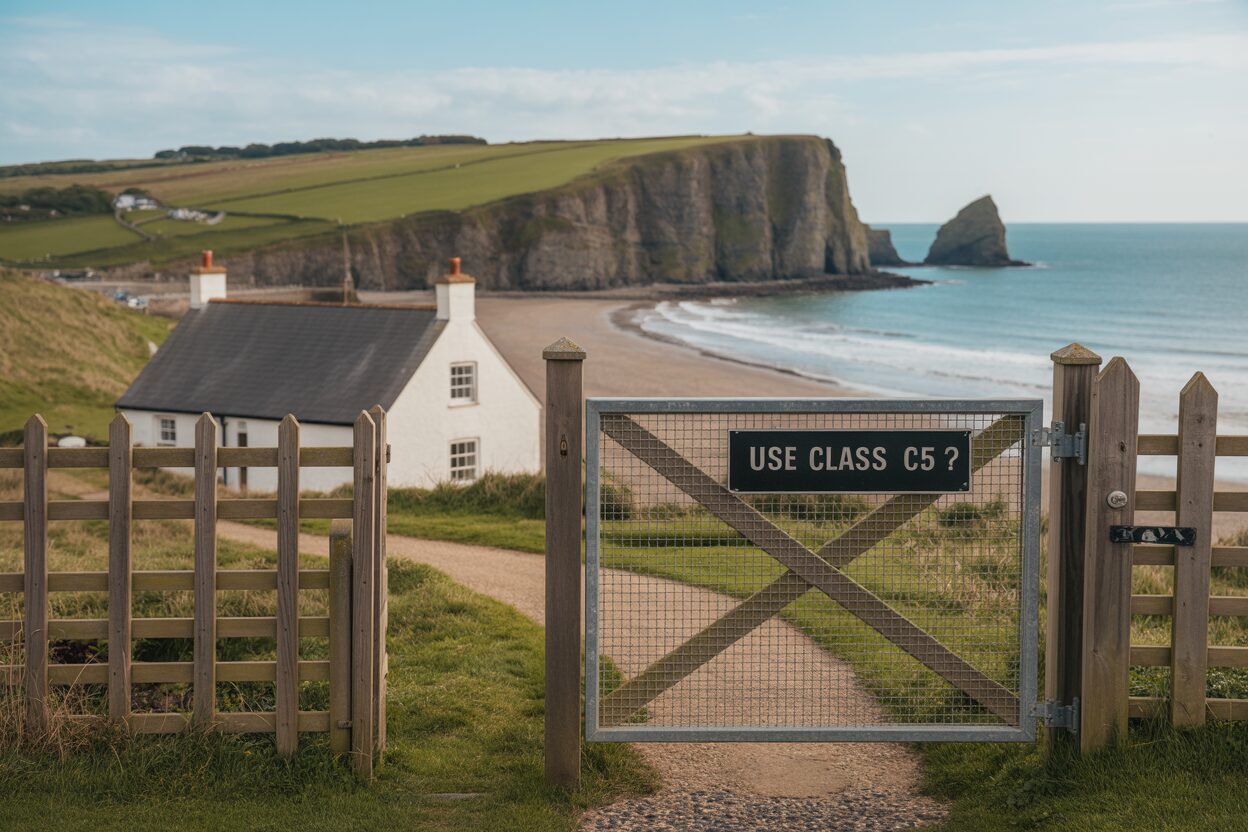
Developer and investor interest in purpose built student accommodation (PBSA) is growing fast. Recent data shows why the sector’s so appealing.
CRBE‘s PBSA Index reports total returns of 9.8%. The sheer scale of PBSA projects intensifies their appeal: Investcorp notes that London schemes often have 250+ beds and approval for a 1,039-bed development has been greenlighted in Leeds. At London’s 2024/25 average rent of £295 per week, a 300-bed, 51-week letting suggests £4.51 million gross annual rent (44 weeks £3.89 million).
This scale of income makes the sector attractive, even with relatively low yields at 4.25% in prime London and 5.25% in non-prime areas. Developers who manage PBSAs post-completion can plough this stream of revenue into funding future schemes.
In this article, find out what PBSAs are, where they’re in demand and the types of students they appeal to. Then, learn which designs appeal most to students and how to finance and complete your own PBSA project.
What PBSA and who it’s for
A purpose built student accommodation (PBSA) is residential accommodation built solely for students. They comprise a mixture of private studios, multi-bed cluster flats and communal areas. The cluster flats have bedrooms for six to eight students with shared living space and facilities. Think of PBSAs as a specialist form of Build to Rent targeted at students. The majority of PBSA developments are new-builds but some are conversions from existing buildings.
The service offering
PBSAs are modern takes on traditional Halls of Residence. As well as providing comfortable living conditions, they feature communal spaces for students where students from different flats can socialise. Further space is set aside for study areas, gyms and games rooms. There’s on-site management and maintenance, and rent bills are inclusive of Wi-Fi and utility charges.
Who’s behind PBSAs?
Private sector firms plan, develop and build PBSAs. On completion, they then either manage them or hand them over to universities or specialist landlords.
Universities are often the biggest backers of PBSAs. They regularly pre-book large numbers of beds for their students through nomination agreements. This delivers room supply, cost certainty and a stronger accommodation offer to help attract students.
For PBSAs, the core benefits are high occupancy and stable income.
Which firms build PBSAs?
Major PBSA builders include Unite Students, Vita Group, Greystar and Watkin Jones. However, smaller, independent developers should not let the dominance of the ten major market participants distract them from originating their own schemes.
There is backing by some local authorities for smaller or first-time PBSA developers. For example, the Mayor of London’s Office has stated that they recognise new entrants need a clearer route to market and wish to put one in place.
Who are PBSAs intended for?
The core market for PBSAs are first-year undergraduates. Living with flatmates is beneficial for them as it helps them settle in, build friendships and adjust to university life. Recognising this, many university room nominations are specifically for UK freshers.
International students seeking prime locations are also a major target. Studio flats are part of the mix to make them more appealing to postgraduates who want more privacy and quieter living space.
Off-season use
As with many other accommodation providers, like student HMOs, PBSAs use 44-51-week tenancy agreements.
Some may offer shorter periods of 40=44+ weeks or more. They may then use the rooms to host summer schools, conferences and short-stay lets for students, interns or key workers.
Demand and supply: where PBSA developments work
PBSAs are particularly successful at major universities as they bridge what is often a significant gap in demand and supply. Many developers at less popular universities have enjoyed success, especially if their PBSAs are within easy walking distance of campus.
The shortage of student accommodation is acute for two main reasons. There are:
- Record numbers of 18-year-old UK students applying
- Over 400,000 sponsored study visas from overseas students
HESA, the Higher Education Statistics Agency, reported nearly three million HE student enrolments in 2023/24. A CBRE thought piece found a shortage of 580,000 beds across the UK. Research from Savills noted that across 20 major locations, there were 2.7 full-time students for every available bed. In Glasgow, the ratio was 3.8 to one.
Lack of access to accommodation has affected rent prices in recent years. Recent statistics showing this include:
- In the 23/24 academic year, rents went up 8.02% (9.39% in the private sector) (Cushman & Wakefield)
- PBSA rentals in London rose 18% in the past two years (Unipol and Higher Education Policy Institute)
- In London, 14% of PBSA accommodation now costs £20,000+ (Unipol and Higher Education Policy Institute)
Factors when choosing a PBSA location
Certain locations offer excellent PBSA development opportunities. Many investors use these two benchmarks when weighing up candidate sites:
- Macro level: total student numbers, international student numbers, pipeline of future beds
- Micro level: how close to campus, safety, amenities, late-night economy, and transport
Attitudes toward purpose built accommodation for students varies between councils and influences final site choices. For example:
- Bath & North East Somerset Council refuses PBSAs in the Central Area, the Enterprise Area, MoD land. It also discourages PBSAs on land suitable for housing and employment uses
- Nottingham City Council encourages the development of PBSAs as long as it meets open space and affordability targets. Cities like Leeds embrace PBSAs too with the recent Hyde Park development.
For developers, the key is finding a supportive council, growing student numbers and a thin development pipeline.
PBSA scheme types: designs that let best
The key audiences PBSAs serve and their benefits are:
- Freshers: A structured environment with on-site support that eases the jump from school to independent living
- International students: Somewhere safe and guaranteed to live in rather than having to compete in the private rental market
- Postgraduates: Quiet, well-managed space, close to campus, so they can balance study with work and research
To position a PBSA to maximise occupancy, provide the following to appeal to the student market:
- Rooms: A decent desk, storage, ergonomic layout and room that fills with natural daylight
- Communal spaces: Study rooms, social lounges and shared kitchens with attractive, durable finishes
- Tech: Fast Wi-Fi and a television in the living room area for shared downtime and social connection
- Inclusive design: Careful consideration for wheelchair users and other disabled residents with step-free access, lifts and adaptable bedrooms
- Security: 24/7 response to concerns and incidents tenants report to you, full control of building entrances and CCTV for comfort and visibility
- Amenities: Secure, covered cycle parking, drying/laundry rooms and simple parcel/food-delivery space close to reception (London councils view one long-stay cycle space per two beds and one short-stay per 40 beds favourably)
- Soundproofing: The best sound insulation standards (go for Approved Document E standard or better) to reduce complaints and help tenants study
Deliver somewhere safe and quiet to live, study and socialise and you’ll be in high demand. For nervous parents, in particular, sending off their child for the first time, knowing there’s security, support and professional management in place provides real reassurance.
PBSA sector: financing
PBSA projects are expensive and require a large upfront budget and access to substantial development finance. Before investing too much of your own time and money, create a robust business model to stress-test every assumption to assess a project’s viability.
Lenders will look for the following in your proposal:
Prove the project will work
Choose a strategy to rent out your rooms: direct-let, a nomination agreement, or a mix. A nomination agreement is likely to result in a higher occupancy rate but the university may want a discount hitting profitability. With direct-let, you control the price. But if you set it too high, marketing costs more and you may have more voids, dragging down your income.
Whichever route you choose, calculate rent per bed and weeks-let. Compare the income with your likely loan payments to get your debt service cover ratio (DSCR).
Aim for at least 1.25x on stabilised income (that’s £1.25 of net income for every £1.00 of debt payment). Development funders and exit lenders commonly use this as a baseline.
Land purchase price
The first step is to work back how much you might earn from the finished building. Then subtract the build costs, loan charges, professional fees, contingency and your developer’s profit.
Whatever remains is what you can afford to pay for the land. That’s the residual land value.
If the residual is too low to make the scheme viable, reduce your offer or change the scheme; if the landowner won’t move, walk away.
Capital stack
Lenders will expect you (and your investors) to have your own funding. They may then extend a senior development loan of:
- 85% loan-to-cost: the lender funds up to 85% of eligible project costs, so you put in at least 15% equity
- 65% loan to gross development value: total debt at completion can’t exceed 65% of the scheme’s end value
Borrowing more may be possible but you’ll normally need mezzanine or preferred equity alongside the senior loan.
Assemble your team
On your team, the minimum you’ll need is a:
- Broker: Sources and structures the development loan and runs covenants, drawdown timetable and so on
- Quantity surveyor: Checks the build costs are realistic and keeps them under control.
- Project monitor: Reports progress to the bank so funds are released on time.
- Lawyer: Deals with contracts, planning, and the legal side of the loan
- Operator: Either your own company or a specialist student housing manager to run the building once it’s finished
On a project this size that can run well into eight figures, you’ll need to reassure lenders, too. Your broker will guide you through the bank’s requirements and coordinate the loan process. The lender will appoint an independent monitoring surveyor (IMS) to recommend/certify each drawdown. The inspector will also confirm that the spending and payments to date match what you set out in your cost plan and programme (and any conditions precedent).
Set up a separate bank account (controlled project/development account) for the project so money can only be used to pay contractors and consultants. Match payment dates with the lender’s sign-off process to avoid cash gaps.
Add safeguards like retentions, performance bonds and step-in rights (via funder direct agreements/collateral warranties). All of these reassurances will give the lender comfort that you will pay everyone on time and cash flow problems won’t delay the build.
You should also prepare a simple route-to-compliance for Building Regulations (fire safety, access, acoustics, energy, overheating and so on). Lenders and Building Control will want to see it, so keep it clear, practical and ready to share when they want it.
Plan the build
In PBSA development, sequencing is important. You buy the land, secure planning, appoint a contractor and then start the build.
The project needs to be ready before September so it’s ready for students to move into at the start of term. If you miss that date, you’ll pay loan interest and other costs while you wait for the next academic year to begin.
Refinance when complete
Your development finance providers will expect repayment when you complete the project.
Refinance onto a 5–10-year commercial mortgage sized on DSCR, or sell the stabilised block if that delivers a better return.
HMO Architects: your PBSA sector partners
Choose the right location within a busy university town or city and you can earn a substantial and steady income from students. Unite Group achieved a 97.5% occupancy in 2024/25 and is aiming for 97-98% for the following year.
Demand from growing student numbers means this market is set for substantial growth in the next few years. If you have spotted a site you think is suitable for development or want to talk about how PBSAs compare with other investment routes, get in touch with HMO Architects.
Large project specialists
HMO Architects deals with projects at all scales. We have experience on multiple large, complex projects that bring together complex planning, architectural and funding arrangements. Here are three recent success stories:
- Highworth Avenue, Cambridge (40 units): We converted two semis into a 40-bed scheme for students and young professionals. This involved resolving a tricky corner plot and close neighbour proximity to deliver a project at scale with compliant layouts and strong tenant amenities.
- Nottingham Road, Nottingham (24 units): We re-planned and part-new-built a historic site into modern flats. Our architects managed to retain the Nottingham Road façade while adding essentials like on-site parking, bike storage and bin stores. This project required a skilled balancing of heritage, planning and community requirements. The end result is a large, investment-grade block suited to student-city demand.
- Devonshire Road, East Sussex (22 units): We converted a former NatWest bank into mixed-use with charity offices below and 22 en-suite HMO rooms above, plus a lift and shared kitchen/lounge. The brief focused on durable, easy-to-manage accommodation at a meaningful scale and our team delivered.
Investment strategy call
Book an investment strategy call with director Ryan Windsor. Get tailored advice on how to build and scale your property portfolio, including large projects like PBSAs and Builds to Rent. Ryan started building his own extensive property portfolio when he was 17. Ask him how he did it using his buy-refurbish-refinance-rent (BRRR) model to get inspiration for your own portfolio.
Click here to book an investment strategy call.
Design and pre-build feasibility studies
Our Architecture Director, Giovanni Patania, formerly of Foster + Partners, is an expert in value engineering. He balances making property attractive to target tenants while managing build and running costs, ensuring the project remains profitable and delivers strong yields.
Giovanni has experience on multiple larger projects. On a project like a PBSA, this means balancing high-quality design with cost control so the finished scheme appeals to students and still delivers investor returns.
On your feasibility call, tell Giovanni about a property you’ve got your eye on. Or, if you already own a property and wonder what’s possible with it, get in touch.
Start-to-end architectural services
HMO Architects works with clients throughout their projects, including:
- Planning permission experts: We have experience in gaining planning permission for our clients across 200 councils.
- Interior design and exterior planning: Our architects balance investment-led design with tenant appeal to maximise your yield and minimise void periods.
- On-site management: Appoint us as your Building Regulations Principal Designer (where required) to keep your project on track and compliant.
View our range of development finance case studies to see how we’ve helped clients turn their ideas into sound investments. Read customer stories on HMO, flat, holiday let and housing projects.
Call our experienced team on 01223 776 997 or email us.
Giovanni is a highly accomplished architect hailing from Siena, Italy. With an impressive career spanning multiple countries, he has gained extensive experience as a Lead Architect at Foster + Partners, where he worked on a number of iconic Apple stores, including the prestigious Champs-Élysées flagship Apple store in Paris. As the co-founder and principal architect of WindsorPatania Architects, Giovanni has leveraged his extensive experience to spearhead a range of innovative projects.




